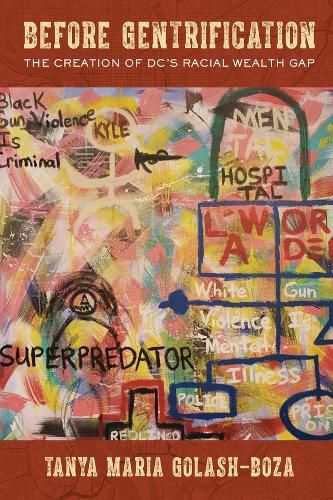Readings Newsletter
Become a Readings Member to make your shopping experience even easier.
Sign in or sign up for free!
You’re not far away from qualifying for FREE standard shipping within Australia
You’ve qualified for FREE standard shipping within Australia
The cart is loading…






Draws a direct line between redlining, incarceration, and gentrification in an American city.
This book shows how a century of redlining, disinvestment, and the War on Drugs wreaked devastation on Black people and paved the way for gentrification in Washington, DC. In Before Gentrification, Tanya Maria Golash-Boza tracks the cycles of state abandonment and punishment that have shaped the city, revealing how policies and policing work to displace and decimate the Black middle class.
Through the stories of those who have lost their homes and livelihoods, Golash-Boza explores how DC came to be the nation's "murder capital" and incarceration capital, and why it is now a haven for wealthy White people. This troubling history makes clear that the choice to use prisons and policing to solve problems faced by Black communities in the twentieth century-instead of investing in schools, community centers, social services, health care, and violence prevention-is what made gentrification possible in the twenty-first. Before Gentrification unveils a pattern of anti-Blackness and racial capitalism in DC that has implications for all US cities.
$9.00 standard shipping within Australia
FREE standard shipping within Australia for orders over $100.00
Express & International shipping calculated at checkout
Draws a direct line between redlining, incarceration, and gentrification in an American city.
This book shows how a century of redlining, disinvestment, and the War on Drugs wreaked devastation on Black people and paved the way for gentrification in Washington, DC. In Before Gentrification, Tanya Maria Golash-Boza tracks the cycles of state abandonment and punishment that have shaped the city, revealing how policies and policing work to displace and decimate the Black middle class.
Through the stories of those who have lost their homes and livelihoods, Golash-Boza explores how DC came to be the nation's "murder capital" and incarceration capital, and why it is now a haven for wealthy White people. This troubling history makes clear that the choice to use prisons and policing to solve problems faced by Black communities in the twentieth century-instead of investing in schools, community centers, social services, health care, and violence prevention-is what made gentrification possible in the twenty-first. Before Gentrification unveils a pattern of anti-Blackness and racial capitalism in DC that has implications for all US cities.